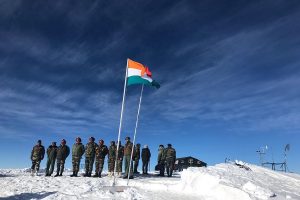Six SECL workers were swept away by a sudden surge of water in SECL’s Kusmunda mine in Korba, Chhattisgarh. The incident occurred on Saturday when the officials were inspecting the water accumulation in the mine after three hours of continuous rainfall starting from 2 pm. While five managed to escape, one officer, Jitendra Nagarkar, remained missing. After an exhaustive 16-hour search, the SDRF team recovered Nagarkar’s body from the mine.
A live video of the incident surfaced on Sunday, capturing the harrowing moments. The footage shows the officials standing together as the water flow intensifies abruptly, sweeping them away within seconds. The video, captured by a driver inside the mine, also recorded his frantic shouts for help.
Advertisement
The incident occurred at the Godavari Company section of the Kusmunda mine, following three hours of continuous rainfall starting from 2 pm. SECL’s shift in-charge Jitendra Nagar, along with three colleagues, went to inspect the water accumulation in the mine. During the inspection, a sudden rush of water and debris overwhelmed the officials and two other workers, resulting in Nagar’s tragic death.
SECL issued a statement regarding the incident, citing heavy rainfall in the Kusmunda Megaproject as the cause. The statement confirmed that six workers were trapped by the water flow, with five managing to escape. Assistant Manager (Mining) Jitendra Nagarkar was swept away into a sump, leading to a 16-hour rescue operation.
The recent heavy rains in Korba caused debris accumulation in the Hume pipes, resulting in the overflow and subsequent incident. SECL and Kusmunda management are continuously monitoring the situation, with ongoing rescue operations in collaboration with the SDRF team.











